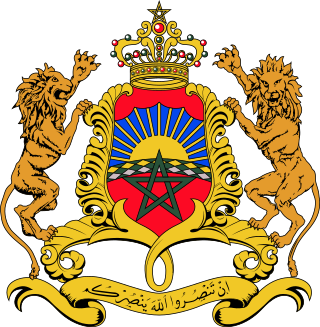
Morocco is a member of the United Nations and belongs to the African Union, Arab League, Arab Maghreb Union (UMA), Organisation of Islamic Cooperation (OIC), the Non-Aligned Movement and the Community of Sahel-Saharan States (CEN-SAD). Morocco's relationships vary greatly between African, Arab, United States, United Kingdom, Australia, and Western states. Morocco has had strong ties with the West in order to gain economic and political benefits. France and Spain remain the primary trade partners, as well as the primary creditors and foreign investors in Morocco. From the total foreign investments in Morocco, the European Union invests approximately 73.5%, whereas the Arab world invests only 19.3%. As of 2009, many countries from the Persian Gulf and Maghreb regions are also becoming more involved in large-scale development projects in Morocco.

Leuven or Louvain is the capital and largest city of the province of Flemish Brabant in the Flemish Region of Belgium. It is located about 25 kilometres east of Brussels. The municipality itself comprises the sub-municipalities of Heverlee, Kessel-Lo, Leuven proper, Wilsele, Wijgmaal and part of Haasrode and Korbeek-Lo. It is the eighth largest city in Belgium, with more than 100,244 inhabitants.

Miskolc is a city in northeastern Hungary, known for its heavy industry. With a population of 161,265 as of 1 January 2014, Miskolc is the fourth largest city in Hungary. It is also the county capital of Borsod-Abaúj-Zemplén and the regional centre of Northern Hungary.
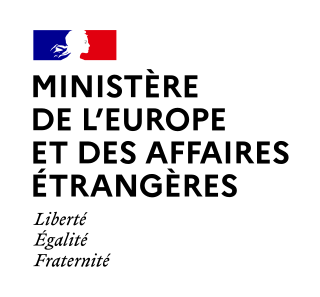
The Ministry for Europe and Foreign Affairs is the ministry of the Government of France that handles France's foreign relations. Since 1855, its headquarters have been located at 37 Quai d'Orsay, close to the National Assembly. The term Quai d'Orsay is often used as a metonym for the ministry. Its cabinet minister, the Minister of Europe and Foreign Affairs is responsible for the foreign relations of France. The current officeholder, Stéphane Séjourné, was appointed in 2024.
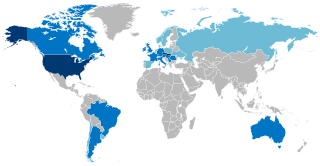
The Slovaks are a West Slavic ethnic group and nation native to Slovakia who share a common ancestry, culture, history and speak the Slovak language.

The French people are a nation primarily located in Western Europe that share a common French culture, history, and language, identified with the country of France.

Belgians are people identified with the Kingdom of Belgium, a federal state in Western Europe. As Belgium is a multinational state, this connection may be residential, legal, historical, or cultural rather than ethnic. The majority of Belgians, however, belong to two distinct linguistic groups or communities native to the country, i.e. its historical regions: Flemings in Flanders, who speak Dutch; and Walloons in Wallonia, who speak French or Walloon. There is also a substantial Belgian diaspora, which has settled primarily in the United States, Canada, France, and the Netherlands.

Lesbian, gay, bisexual, and transgender (LGBT) people in the Democratic Republic of the Congo (DRC) face discrimination and legal challenges not experienced by non-LGBT residents. Same-sex sexual activity is legal for both males and females in the Democratic Republic of the Congo, although LGBT individuals may still be targeted for prosecution under public indecency provisions on occasion.
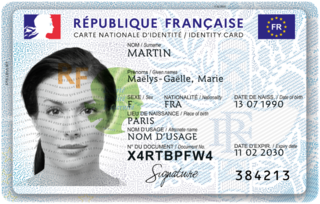
The French national identity card is an official identity document consisting of an electronic ID-1 card bearing a photograph, name and address. While the identity card is non-compulsory, all persons must possess some form of valid government-issued identity documentation.

Relations between Armenia and France have existed since the French and the Armenians established contact in the Armenian Kingdom of Cilicia in the 12th century. Formal diplomatic relations between Armenia and France were established on 24 February 1992. Due to the good relations between the two countries, 2006 was proclaimed the Year of Armenia in France.

Colombians are people identified with the country of Colombia. This connection may be residential, legal, historical or cultural. For most Colombians, several of these connections exist and are collectively the source of their being Colombian.

The Dutch diaspora consists of the Dutch and their descendants living outside the Netherlands.

Relations between France and North Korea are non-existent, as the two nations have no formal diplomatic relations with one another. Along with Estonia, France is one of the only two European Union members not to maintain diplomatic relations with North Korea. In October 2011, the French government decided to open a French Bureau for Cooperation in Pyongyang.
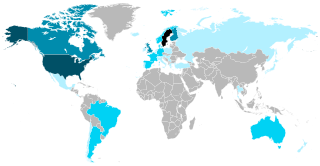
The Swedish diaspora consists of emigrants and their descendants, especially those that maintain some of the customs of their Swedish culture. Notable Swedish communities exist in the United States, Argentina, Australia, Canada, New Zealand, Brazil, and the United Kingdom as well as others.

British migration to France has resulted in France being home to one of the largest British-born populations outside the United Kingdom. Migration from the UK to France has increased rapidly from the 1990s onwards. Estimates of the number of British citizens living in France vary from 261,000 to 400,000. Besides Paris, many British expatriates tend to be concentrated in the regions of southern France, Brittany, and recently the island of Corsica. Dordogne has a large British immigrant community. The region has between 5,000 and 10,000 British residents and 800 British entrepreneurs, drawn by the French lifestyle, warm climate, and lower cost of living.
German emigration to France has resulted in it being the home of one of the largest communities of German population born outside Germany. Migration from Germany to France has increased rapidly from the 1990s onwards, and by 2012 there were an estimated 130,000 German citizens living in France.
French people living outside France are French citizens living outside the current territory of the French Republic.

DR Congo–France are the bilateral diplomatic relations between the Democratic Republic of the Congo and France. Both nations are members of the Organisation internationale de la francophonie and the United Nations.



















